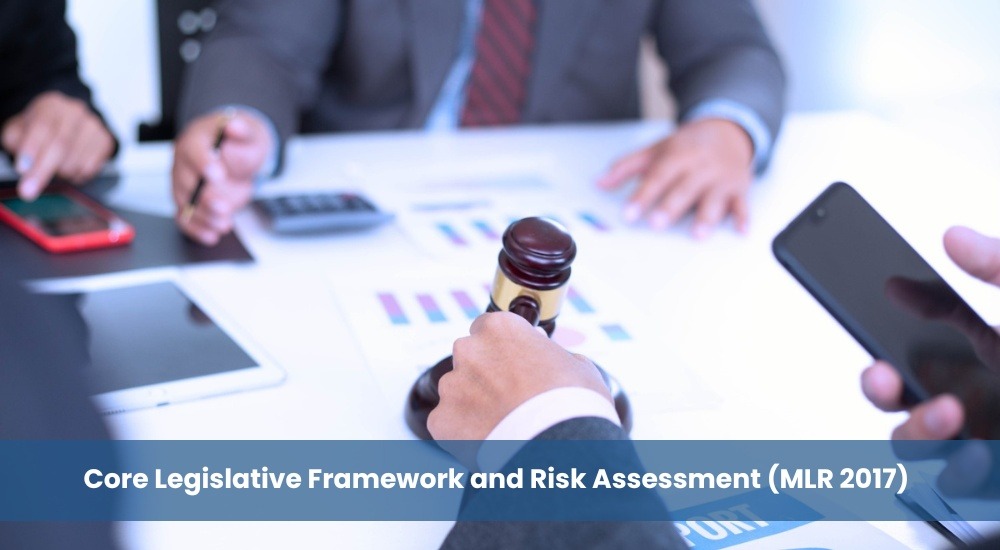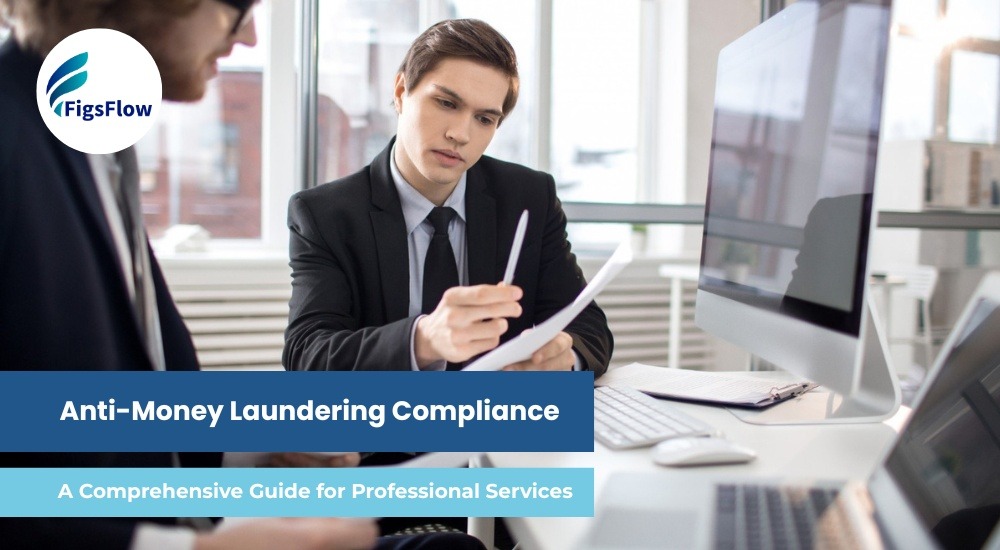The evolving landscape of financial crime necessitates robust Anti-Money Laundering (AML) frameworks that effectively combat money laundering, terrorist financing, and proliferation financing. This article examines the comprehensive regulatory structure governing AML compliance in the United Kingdom with particular emphasis on the Money Laundering, Terrorist Financing and Transfer of Funds Regulations 2017 (MLRs 2017). Through detailed analysis of regulatory requirements, risk assessment methodologies, and compliance obligations, this article provides practitioners with essential guidance for navigating the complex terrain of modern AML compliance.
Introduction & Regulatory Architecture
The fight against financial crime has intensified significantly, with over 100,000 UK businesses now covered by money laundering regulations. Accounting firms serve as crucial “gatekeepers” to the financial system, extending AML obligations beyond traditional financial institutions to encompass professional service providers who facilitate potentially suspicious transactions.
The UK’s regulatory framework operates through distributed oversight, with the Financial Conduct Authority (FCA) serving as primary regulator under the Financial Services and Markets Act 2000. HM Revenue and Customs (HMRC) supervises Money Service Businesses and Trust/Company Service Providers, while professional bodies including ACCA, ICAEW, and CIMA function as self-regulatory organisations with statutory powers. The National Crime Agency (NCA) serves as the central repository for Suspicious Activity Reports (SARs).
Recent enforcement actions under different regulators underscore the growing regulatory scrutiny surrounding AML compliance across the financial and professional services sectors. In 2025, the FCA imposed a £21 million fine on Monzo Bank for systemic failures in designing and implementing AML processes and procedures, ranging from customer due diligence, risk assessment, to monitoring. Additionally, HMRC fined 91 accountancy service providers a total of £538,916 between October 2024 and March 2025 for breaches of AML regulations. These developments reaffirm the critical need for firms to maintain robust compliance frameworks and to ensure continuous alignment with evolving regulatory space.
Core Legislative Framework & Risk Assessment (MLR 2017)
Regulation 18 establishes the cornerstone obligation for comprehensive risk assessment, requiring all relevant persons to evaluate their exposure to financial crime risks considering customer base, geographical operations, products and services, and delivery channels. The written documentation requirement creates institutional memory, provides compliance evidence, and establishes foundations for appropriate control measures. Regular updates ensure assessments remain current as businesses evolve and new threats emerge.

Regulation 33, Enhanced Due Diligence (EDD) framework expands beyond traditional high-risk categories, incorporating evolving risk factors that reflect dynamic money laundering methodologies. EDD requires additional customer information including enhanced identity verification, deeper source of funds understanding, and comprehensive business relationship assessment. Senior management approval for high-risk relationships ensures appropriate accountability and executive-level risk judgment.
Regulation 66, Suspicious Activity Reporting (SAR) requirements establish comprehensive reporting obligations while prohibiting “tipping-off” to maintain investigation integrity. Internal reporting procedures ensure suspicious activities are promptly escalated through designated Money Laundering Reporting Officers (MLROs) before external reporting to authorities.
Three-Tiered Risk Classification System
The regulatory framework employs a sophisticated risk classification system. High-risk factors requiring EDD include customers with complex corporate structures disproportionate to business activities, cash-intensive businesses, companies with nominee arrangements, and entities from countries lacking effective AML systems or subject to sanctions. Products favouring anonymity, private banking services, and transactions involving precious metals, oil, arms, or cultural artifacts automatically trigger enhanced scrutiny.
Medium-risk factors represent the default category for standard CDD, applied to typical business relationships that neither qualify for simplified procedures nor require enhanced measures.
Low-risk factors permit simplified due diligence for public administrations, regulated financial institutions, listed companies, and entities from jurisdictions with effective AML frameworks and low corruption levels.
Customer Due Diligence & Documentation Requirements
Regulation 27 establishes four mandatory CDD measures: Identity verification using reliable independent sources, beneficial ownership identification for entities with 25% or greater ownership/control, understanding business relationship purpose and intended nature, and ongoing monitoring throughout relationship duration. These components create comprehensive customer understanding while enabling effective ongoing risk management.
Documentation requirements for Know Your Customer (KYC) procedures include proof of identity (passport, driver’s license, national ID) and proof of address (utility bills, bank statements, council tax bills within specified timeframes). Know Your Business (KYB) requirements encompass certificates of incorporation, shareholder registers, articles of association, and for non-UK companies, additional documentation including certificates of good standing and corporate structure charts.
Certification must be performed by qualified professionals including lawyers, chartered accountants, notaries, bank officers, or embassy officials, with certification including full name, signature, date, position, firm details, professional membership information, and official stamps or letterheads.
Although the MLR 2017 does not specifically address document certification for non-UK residents, established practice allows local authorities or qualified professionals in the individual’s or company’s country of residence to certify documents. Companies must ensure that the certifying authority is reputable and that the certification meets acceptable standards for regulatory compliance purposes.
Politically Exposed Persons Framework
The PEP framework recognises heightened corruption and money laundering risks associated with individuals in prominent public functions, including heads of state, senior government officials, military leaders, and state-owned enterprise executives. Family members and known close associates are included, with PEP status maintained for at least 12 months after leaving public positions.
EDD automatically applies to PEPs, requiring case-by-case risk assessment, additional information gathering regarding source of wealth and funds, enhanced ongoing monitoring, and senior management approval for relationship establishment or continuation.
Although the MLR 2017 establishes the requirement to verify source of funds, it does not provide specific steps for this process. In practice, firms typically require comprehensive documentation from income sources to probate documents. This documentation provides the necessary audit trail to substantiate the legitimate origin of funds and satisfy EDD requirements.
High-risk clients must be subject to enhanced verification under the MLR 2017, but the regulations do not specify verification timings or frequency. The verification schedule should be determined through a risk-based approach that considers the client’s risk assessment, any changes in circumstances, and the firm’s professional discretion.
Record Keeping, Training & Governance
Regulation 40 mandates comprehensive record retention for CDD measures, business relationship documentation, and occasional transaction records. The standard 5-year retention period from relationship termination or transaction completion serves investigative needs while balancing data protection considerations. Maximum retention extends to 10 years, with secure destruction required thereafter unless legal exceptions apply.
Data protection integration through Regulation 41 creates strict “purpose limitation” preventing commercial use of AML-gathered customer data without legal authorisation or explicit consent. Electronic record standards require data integrity maintenance, accessibility throughout retention periods, backup and recovery procedures, and authentication preventing unauthorised changes.
Training & Compliance Culture
Regulation 24 requires comprehensive training for all relevant employees and agents whose work involves AML compliance or financial crime detection. Training content must include legal explanations within commercial context, CDD procedures, internal reporting mechanisms, red flag identification, suspicious activity handling, and relevant data protection requirements.

Training programs must be tailored to specific business areas and risk exposures, with documentation showing training recipients, content delivered, and completion dates. New employees require prompt training, with regular updates reflecting legislative changes, regulatory developments, and evolving risk profiles. The failure to provide adequate training creates potential defences for employees accused of reporting failures while exposing businesses to regulatory prosecution.
Organisations must establish independent audit functions to assess AML policy effectiveness (except sole practitioners), senior management oversight for high-risk relationships and policy implementation, and governance frameworks ensuring compliance culture throughout the organisation.
How FigsFlow Simplifies MLR 2017 Compliance
The regulatory requirements outlined above (risk assessments, CDD procedures, PEP screening, EDD workflows, record retention, and ongoing monitoring) create significant administrative burden, especially for small and mid-sized accountancy practices.
FigsFlow consolidates these compliance obligations into a single, integrated platform designed specifically for UK professional services firms:
Core Compliance Capabilities
- Automated Risk Assessment – Pre-built templates guide you through Regulation 18 requirements with automatic risk scoring and written rationale
- Electronic ID Verification – Complete CDD in 30 seconds with verification against government databases and document authentication
- Companies House Integration – Auto-pull company details, beneficial ownership (25%+ threshold), and PSC information per Regulation 27
- Comprehensive PEP & Sanctions Screening – Automatic screening against major databases with daily re-screening and senior management approval workflows
- Enhanced Due Diligence Templates – Pre-built EDD workflows for high-risk clients including complex corporate structures, cash-intensive businesses, and international entities
- Complete Audit Trail – Timestamped records meeting Regulation 40’s 5-year retention requirements, ready for FCA, HMRC, or professional body inspections
- Automated Ongoing Monitoring – Schedule periodic reviews based on client risk classification
Beyond AML Compliance:
FigsFlow also handles proposals (100+ templates), engagement letters meeting professional body standards, pricing calculators, secure document portals, and integrations with Xero, QuickBooks, and HubSpot.
How much FigsFlow Cost
£16/month base (£8 proposals + £8 AML) + £2.10 per verification check, or £8/month for proposals + £3.00 per check (includes AML screening).
For practices onboarding 20 clients annually, total cost is under £300/year compared to standalone AML tools charging £60-£80 per check or £200+ monthly subscriptions.
Conclusion
As financial crime continues to evolve in scale and sophistication, AML compliance is no longer optional, it is essential. Professional services firms particularly in the accountancy sector must ensure their frameworks meet evolving regulatory standards. The UK’s stringent regulatory landscape, governed by MLR 2017, and overseen by multiple supervisory bodies, entrusts significant obligations on firms to assess risk, implement due diligence procedures, and maintain robust accountability structures.
Recent enforcement actions highlight that accountability is no longer confined to large financial institutions. Accountancy firms are increasingly held to rigorous standards, with penalties imposed for inadequate risk assessments, poor documentation practices, and insufficient staff training. These developments serve as a clear reminder that compliance is not merely a regulatory requirement—it is a strategic imperative tied to institutional reputation, financial system integrity, and societal efforts to combat serious crimes and terrorism financing.
Fortunately, FigsFlow now comes equipped with AML and KYC modules that let you handle these compliance requirements without struggling with multiple platforms.


